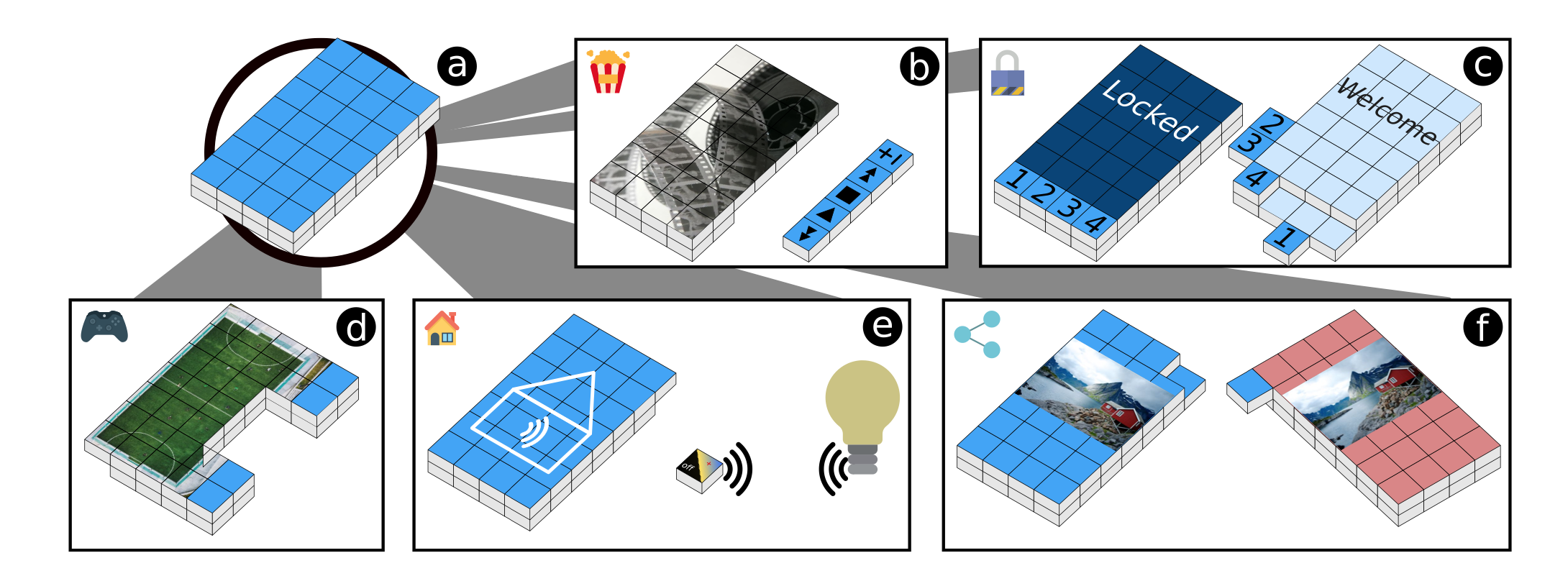Overview
Our work will involve creating both physical and software prototypes of our systems. We aim to distribute our prototype software and hardware prototypes in both software and hardware form to inspire future development.
- 1. Pulp Friction -- a reconfigurable haptic device employing a ferromagnetic marble for back-of-the device handheld use, which, for the first time, probes, without instrumenting the user, the periphery of the distal phalanx with localised stimulation.
- 2. PickCells -- a fully reconfigurable device concept composed of cells, that breaks the mould of rigid screens and explores a modular system that affords rich sets of tangible interactions and novel across-device relationships.
- 3. ActivePinScreen -- applies localised stimuli on multiple fingers with fine spatial and temporal resolution. The tactile screen uses an array of solenoid-actuated magnetic pins with millimetre scale form-factor which could be deployed for back-of-device handheld use without instrumenting the user.

Download the paper (PDF) | Paper ACM link
More details of the Pulp Friction prototype can be find in both Software and Hardware.

Download the paper (PDF) | Paper ACM link
More details of the PickCells prototype can be find in both Software and Hardware.

Download the paper (PDF) | Paper ACM link
More details of the Active PinScreen prototype can be find in both Software and Hardware.